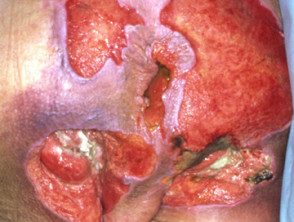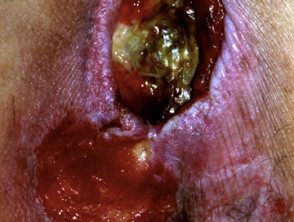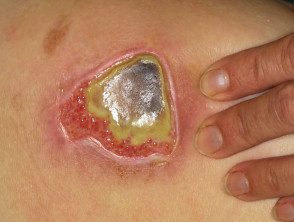What is a pressure? ulcer?
A pressure ulcer is a reddened area of skin that progresses by breaking down the skin and underlying tissue to form a erosion or ulcer, and is due to persistent pressure on the affected area. A pressure ulcer is also known as a decubitus ulcer, decubitus ulcer, pressure and pressure wound. ulceration.
What causes a pressure ulcer?
A pressure ulcer is caused by a lack of blood flow due to mechanical stress on the skin and tissues over a bony area that has been under pressure for a long period of time. If the blood supply is cut off to an area of skin for more than 2-3 hours, the skin becomes deprived of oxygen and begins to die. Also, when you slide slowly across a bed or chair, friction on the outer layer of skin, such as wrinkled bedding and clothing, contributes to skin lesions and ulcerations. Excessive exposure to moisture, such as sweat, blood, urine, or feces, also increases the chance of developing a pressure ulcer.
Who is at risk for a pressure ulcer?
people who are still due to illness or injury are at the highest risk of developing a pressure ulcer.
- They may be in a wheelchair or bedridden, and unable to change position without assistance.
- They may have nerve damage from injury or disease, such as spina bifida, diabetes, or stroke, and can't feel the pain or signals that normally make people move.
- Older people are at higher risk because their skin is thinner and more fragile.
- An ulcer can develop under a plaster of Paris or fiberglass cast (cast ulcer).
What are the signs and symptoms of pressure? ulcers?
Pressure ulcers are classified into stages based on the severity of the wound.
Level 1
- The skin is not broken but shows a pink or reddened area
- May look like a mild sunburn
- The skin may be sensitive, itchy, or sore
Stage 2
- The skin is red, swollen and painful.
- Blisters may be present
- The upper layers of the skin begin to die.
Stage 3
- The ulcer has broken through the skin and the wound extends into deeper layers of skin tissue.
- Crater-like ulceration is present
- The wound is prone to infection
Stage 4
- The pain extends beyond the skin and reaches the adipose tissue, muscle and bone.
- dead blackened tissue called it's expensive can be seen in very open wounds
Stage 3/4 pressure ulceration

Sore

Sore

Sore
Most people with a pressure ulcer will feel some pain and itching. However, people with altered senses may not feel any pain, even with a deep, severe sore.
What is the treatment for a pressure ulcer?
A pressure ulcer can be difficult to treat once it is past stage 2. In the early stages, when the skin is still intact, a pressure ulcer usually heals on its own if the pressure has been removed. Once the skin is broken, the main goal is to prevent infection and protect the sore so it can heal. Special dressings and honey preparations can be used to help the healing process. Dead tissue can be removed with a scalpel (debridement)
Therapeutic Devices used to treat a pressure ulcer include:
- Current negative pressure wound therapy (VAC®)
- Hydrotherapy debridement, using saline solution in a syringe or a pressure jet of water
- Warming therapy, using radiant heat in a moist environment to maintain the skin's surface temperature of 37-38°C
Deep pressure ulcers are very difficult to treat and often require surgical treatment to remove dead and decaying tissue.
- Healthy skin can be grafted onto the damaged area.
- The infection needs treatment with antibiotics.
- In serious or life-threatening situations, amputation of a limb may be necessary.
Can pressure ulcers be prevented?
Pressure ulcers can be prevented with intensive nursing care. Measures to prevent pressure ulcers include:
- Prevent and correct malnutrition if present (fluid, energy, protein, vitamins and minerals)
- Daily inspection of the skin of an immobile person for early redness
- Frequent repositioning (every 2 hours)
- Maintain skin hygiene.
- Special foam, fiber, and gels used as padding materials in chairs and beds to relieve pressure on bony prominences.
- Alternating pressure mattresses and overlays.
Prevention of pressure ulcers is the best approach, as an established pressure ulcer can be painful and even life-threatening. It can also prolong hospital stays and dramatically increase medical costs.

